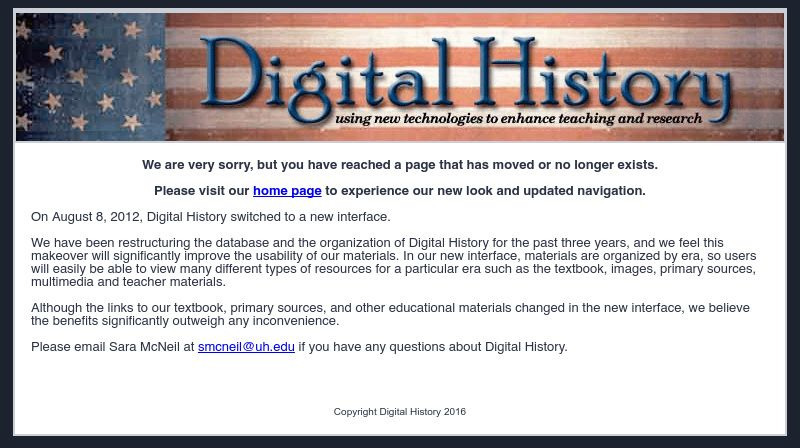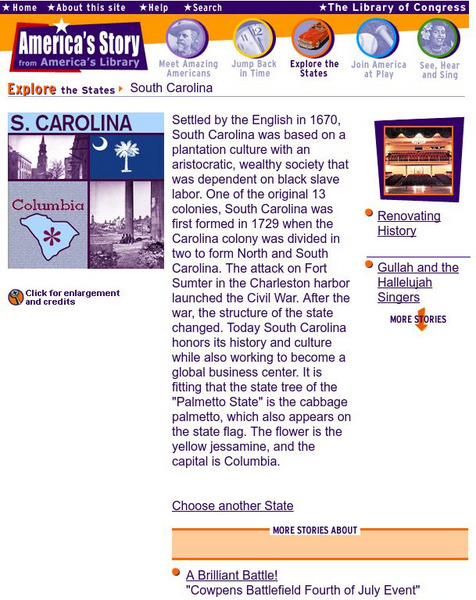Curated OER
Dance: Discovering the Culture of Gullah
It's wonderful to see a lesson that incorporates art, movement, and writing. These three forms of creative expression are explored as learners dance to music from the Gullah people of West Africa. They analyze several paintings, listen...
Curated OER
Her stories: African American folktales, fairy tales, and true tales
Students discuss the illustration's allusion to the myth, Pandora's Box. Students locate instances of folk sayings or expressions that make these tales seem authentic to the reader. Students draw a Venn diagram comparing Catskinella and...
Curated OER
Rituals/traditions with Gullah religion
Sixth graders discuss some of the earliest people who lived in each region in order to comprehend how humans interacted with the environmental conditions at that time. They make connections to present-day regions including...
Curated OER
Catch the Gullah Beat: Rhythm and Percussion
Students explore the Gullah culture. For this social studies lesson, students construct and play instruments similar to those of the Gullah people.
Curated OER
Writing to Publicize an Event--The Cultural Day Festival on Sapelo Island
Learners create a poster advertising the Gullah Geechee Cultural Festival on Sapelo Island. In this Gullah Geechee culture lesson, students watch a video called "Gullah Music" and discuss the music and traditions of the slaves from...
Curated OER
Off Times of Slaves on the Sea Islands
Sixth graders explore the aspect of slave life on the Sea Islands. They explore the Gullah language, folk tales, music and games during the "off" times of slaves. Students read and interpret Gullah folk tales. They recognize music in the...
Curated OER
Carolina Gold and the Gullah
Eighth graders investigate the physical geography of South Carolina to explore how it was suited for growing rice. They examine how slave labor contributed to a plantations success and compare Gullah culture from now to the past.
PBS
Pbs Learning Media: Sapelo Island Culture
In this video segment from EGG: the arts show, learn about the Gullah/Geechee culture of Sapelo Island.
Digital History
Digital History: The Diversity of Colonial Slavery
Read about the three distinct systems of slavery that developed in the colonies based primarily on the crops that were grown in each region. See how the system affected the way the culture of slaves grew out of the region.
PBS
Pbs Learning Media: Egg: The Arts Show: Ben Hall of Sapelo Island
Short video from Egg: the arts show in which Sapelo Island resident, Ben Hall, guides viewers through an introduction to Sapelo Island, which is inhabited by the descendants of African slaves. This is one in a series of videos about...
PBS
Pbs Learning Media: Ronald Johnson of Sapelo Island
In this video segment from EGG: The Arts Show, resident Ronald Johnson explains that Sapelo Island is a unique place, preserving the last examples of Gullah/Geechee culture.
PBS
Pbs Learning Media: Egg: The Arts Show: Frankie Quimby of Sapelo Island
Egg: The Arts Show video in which Frankie Quimby, a resident of Sapelo Island, talks about the history and culture of the island. This is one in a series of videos about Sapelo Island. [1:48]
Georgia Humanities Council and the University of Georgia Press.
New Georgia Encyclopedia: Geechee and Gullah Culture
Discover the Georgia Sea Islands which are home to the Geechee and Gullah culture that are part of West African ethnic groups.
Library of Congress
Loc: America's Story: South Carolina
Explore how South Carolina moved from a "plantation culture" in 1670 to a "growing research center and banking state" today. South Carolina played a major role in the Revolutionary War and the Civil War.
South Carolina Educational Television
Etv: Gullah Net: Got the Blues
Learn about music called the Blues, and then write, play, and sing an original blues song.
Other
Avery Research Center for African American History
Rich site with collections of primary documents relating to the history and culture of African Americans in Charleston, South Carolina.
Other
The Language of the Sea Islands
Comparison of the Gullah Language and languages of West Africa. Lists some words of the gullah language that come from African origins.











